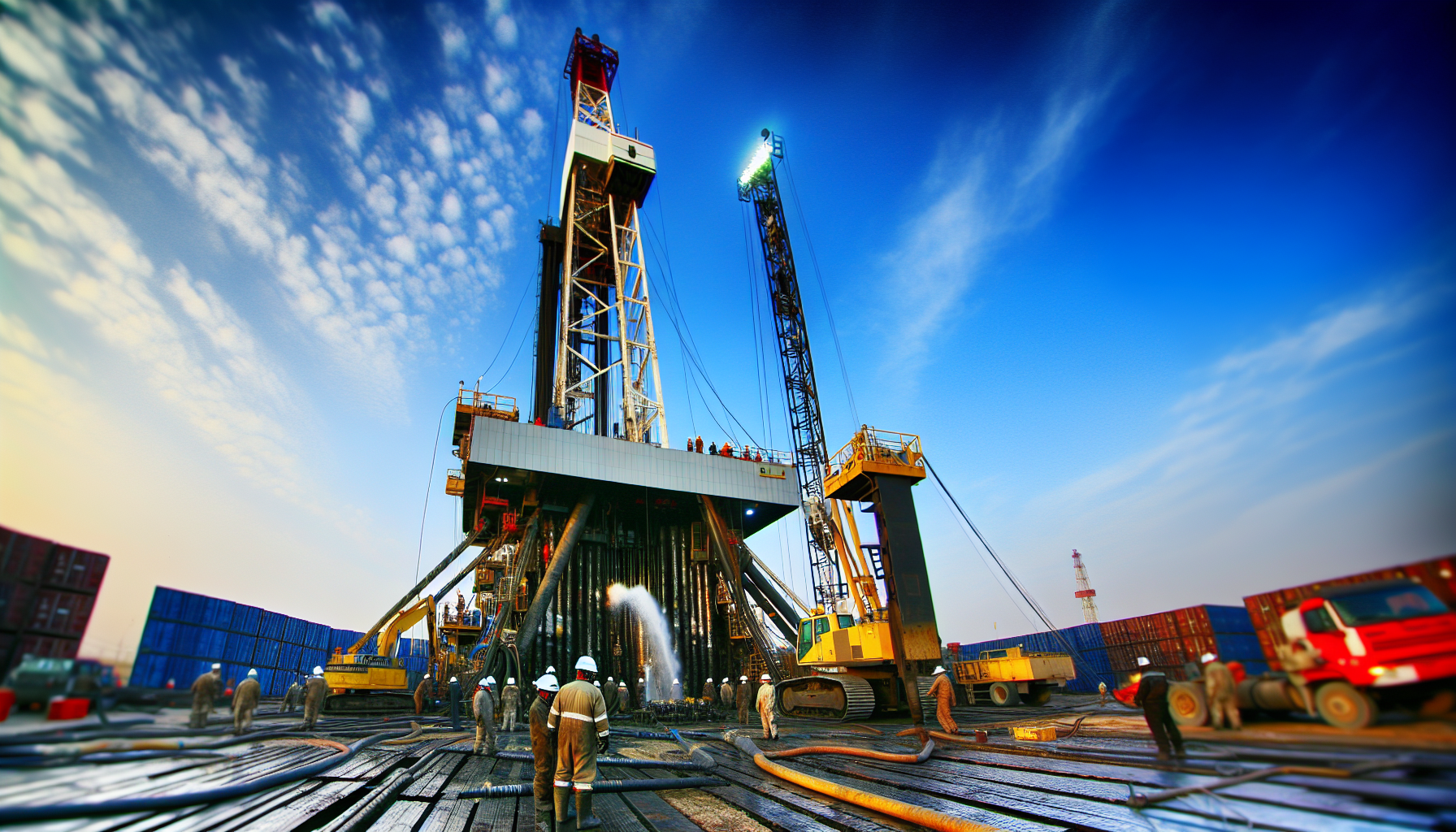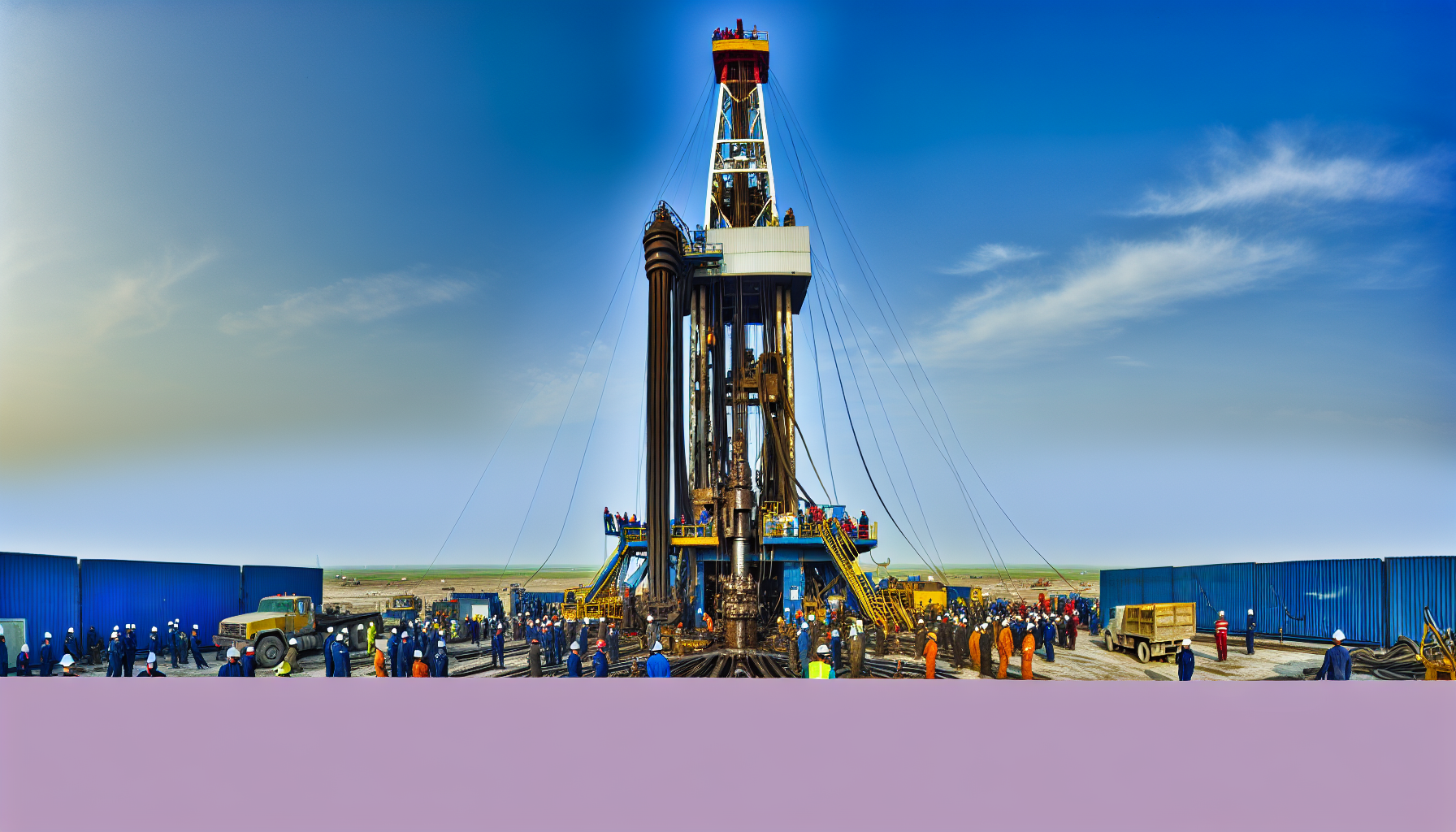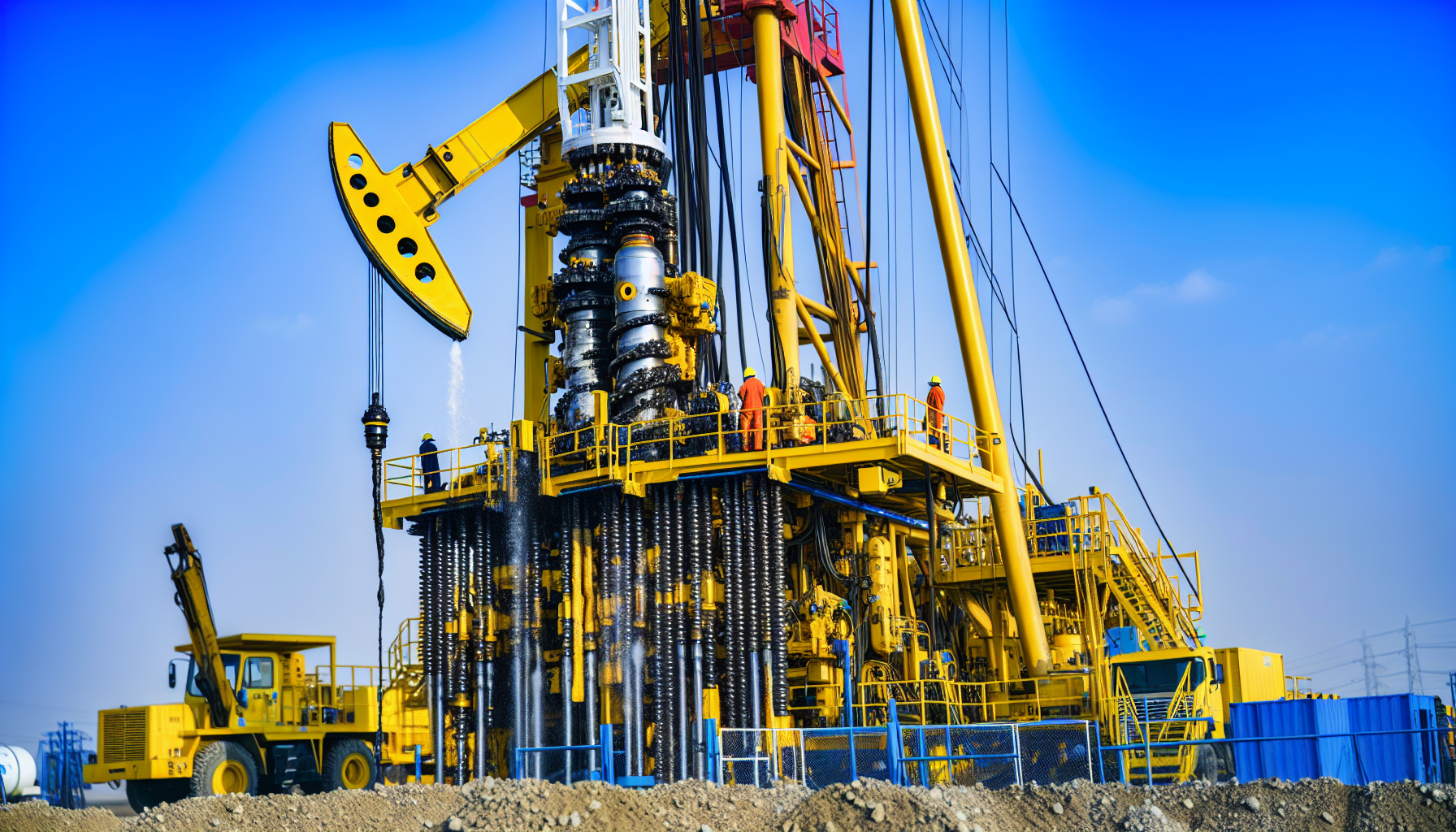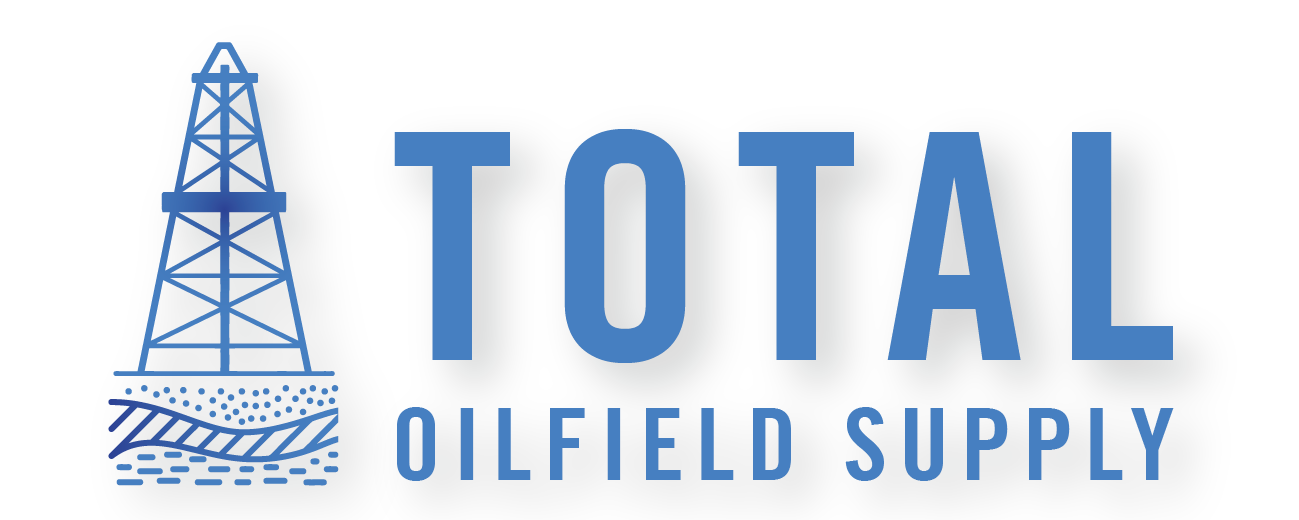When it comes to drilling rigs, horsepower (hp) dictates performance capabilities and the scope of potential operations. In this article, we outline what are the different hp levels for drilling rigs, explaining why each category matters for various drilling depths and challenges. Whether for shallow wells or complex deepwater operations, understanding these hp distinctions is crucial for selecting the right rig for the job.
Key Takeaways
Horsepower is a critical aspect of drilling rig performance, affecting drilling speed, fluid pump power, borehole stability, and the ability to drill through harder formations. Higher horsepower equates to more robust drilling capability, especially in extended operations and challenging conditions.
Drilling rigs are categorized by horsepower into low (under 1,000 HP), medium (1,000-2,000 HP), and high (over 2,000 HP) categories, each suited for different well depths and drilling complexities. High horsepower rigs, for instance, are indispensable for deep and extended reach drilling tasks.
Technological advancements in drilling have led to improvements in power systems, such as AC rigs and hydraulic horsepower optimization. Additionally, innovations like automated and intelligent drilling systems have enhanced efficiency and refined energy management in drilling operations.
The Importance of Horsepower in Drilling Operations

Horsepower significantly influences drilling efficiency by directly affecting the rate of penetration, which is the speed at which the drill bit cuts through the earth. The greater the horsepower, the more powerful the pumps operating to deliver drilling fluid at higher pressures, essential for clearing cuttings from the wellbore and maintaining borehole stability. A rise in engine horsepower enhances a rig’s capacity to drill faster and tackle harder rock formations.
Sufficient horsepower is required to ensure the optimal drilling performance of drilling rigs, powering operations from rotating the drill string to lifting heavy equipment. Rigs with sufficient horsepower can maintain peak performance even under the stress of extended operations, adverse conditions, and challenging drilling scenarios.
Mechanical Rigs vs. AC Rigs
Mechanical rigs, offering lower horsepower compared to AC rigs, have their operational efficiency in drilling tasks influenced by this characteristic. In contrast, AC rigs are characterized by higher horsepower capabilities, setting them apart in their operational range. The shale boom has witnessed a high demand for AC rigs, primarily due to their higher horsepower.
The shift towards horizontal drilling demands the use of rigs equipped with AC power systems. These systems provide the improved motor speed and torque required for such advanced drilling operations, giving AC rigs a competitive edge over their mechanical counterparts.
Hydraulic Horsepower and Drilling Efficiency
Hydraulic horsepower (HHP), a significant factor in drilling operations, is determined by both pressure and flow rate. Increasing hydraulic horsepower can enhance the removal of cuttings from the wellbore by optimizing the hydraulic impact force. Achieving the right balance between bit nozzle pressure loss and total system pressure loss is crucial for efficient drilling.
Mud density, drill pipe size, and hole size are critical factors determining the hydraulic system pressure and thus the horsepower requirements for mud pumps. Inefficient mud systems and insufficient engineering planning can result in a lack of hydraulic power at the bit.
Drilling Rig HP Categories

The categorization of drilling rigs is horsepower-based. This categorization aids in understanding their capabilities for different drilling depths and complexities. Technological advancements have significantly enhanced the capabilities of drilling rigs, leading to categories that can achieve extended reach drilling and utilize advanced stimulation technology.
Differentiating between low, medium, and high horsepower rigs is of great importance. It informs decision-making processes in drilling operations, from determining the right rig for a specific drilling task to assessing the potential for operational efficiency and energy management.
Low Horsepower Rigs (Under 1,000 HP)
Low horsepower drilling rigs, with their design and power capabilities, are ideal for drilling shallow wells. One of their key advantages is high mobility. This feature makes them well-suited for drilling operations requiring frequent rig relocation.
Even with their lower horsepower, these rigs hold a significant place in the drilling landscape. They are particularly useful in operations where the depth of drilling is not too extensive, or in projects where the mobility of the rig is a critical factor.
Medium Horsepower Rigs (1,000-2,000 HP)
Medium horsepower rigs bridge the divide between low and high horsepower categories. They are typically utilized for drilling medium-depth wells ranging from approximately 10,000 to 20,000 feet.
These rigs offer a balance between power and versatility. Their horsepower is sufficient to handle more complex drilling tasks than low horsepower rigs, but they remain more manageable and less resource-intensive than high horsepower rigs.
High Horsepower Rigs (Over 2,000 HP)
High horsepower rigs serve as the driving forces in the drilling industry. They are designed to handle the most challenging drilling projects. Equipped with robust top drive motors, these rigs provide high torque and power necessary to overcome friction at greater depths and make longer horizontal runs through difficult geologies.
These onshore drilling rigs are a testament to how far drilling technology has come, including the use of drill collars and advanced drilling equipment. Their ability to handle deep and extended reach drilling makes them indispensable for complex, large-scale drilling operations, often carried out by drilling contractors.
Factors Affecting Drilling Rig Horsepower Requirements

A variety of factors contribute to the horsepower requirements of drilling rigs. It’s not just about the raw power the rig can generate, but how that power is utilized and managed. Deeper and longer wells necessitate increased horsepower in drilling rigs to overcome the greater frictional forces encountered.
Moreover, the method of drilling also plays a role. Horizontal drilling and pad drilling operations require rigs with higher horsepower to move the rig efficiently from one well bore to another on the same pad.
Well Depth and Geology
The depth of the well greatly affects a drilling rig’s horsepower requirements. The greater the depth, the more horsepower is needed. This is due to the larger distance between the bit and its source of hydraulic supply. For ultra-deep wells, high horsepower rigs are necessary, equipped to handle the challenges of deepwater offshore fields or areas with complex geological structures.
The geological formation being drilled also affects the horsepower requirement. Harder formations require drilling rigs with increased horsepower to achieve effective drilling.
Drilling Methods: Vertical vs. Horizontal Wells
The selection of either vertical or horizontal drilling methods considerably impacts the horsepower requirements. Drilling horizontally requires rigs with higher horsepower due to the extended length of horizontal wells, commonly found in unconventional resource plays. The added energy required to pump drilling fluid through longer wellbore trajectories and maintain directional control necessitates more horsepower.
Horizontal drilling and hydraulic fracturing in the eagle ford shale region have revolutionized the industry by allowing greater contact with the reservoir, significantly improving hydrocarbon production.
Innovations and Advancements in Drilling Rig Power

The world of drilling rig power is not static. Drilling rig power has seen substantial enhancements due to technological advancements, most notably the advent of top drives and rotary steerable systems (RSS). These innovations have optimized the efficiency of horizontal drilling and affected horsepower requirements.
Alongside these operational advancements, there has also been a notable enhancement in automation capabilities within drilling operations. These improvements have further contributed to efficiency and power advancements, reshaping the landscape of drilling rig power.
Automation Capabilities and Intelligent Drilling Systems
The drilling industry is undergoing a transformation through automation. Drilling rigs are increasingly equipped with:
Automated drilling systems, such as the Rotary Steerable System for precision drilling
AI-managed closed-loop systems for real-time adjustments
Technologies like SmartROS® and real-time data analytics that support automated decision-making
These advancements boost drilling efficiency and reduce the need for human-machine interactions.
Automation-compatible high horsepower AC rigs offer several benefits for power management and drilling efficiency, including:
Refining power management by drilling wells briskly and efficiently
Backing up drilling operations with precise data from downhole sensors
Contributing to better energy management through precise drilling paths
Optimizing energy usage and reducing fuel consumption through AI-facilitated operation optimizations
These features make automation-compatible high horsepower AC rigs a valuable tool for the oil and gas industry.
Operational Efficiency and Energy Management
The disparity in efficiency between AC rigs and non-AC rigs has broadened, with AC rigs accomplishing efficiency gains of nearly 40%. This can be further augmented by using high power-density AC-induction motors delivering up to 50% more power. Preparatory work, such as laying lines and installing equipment during transport to the drilling site, can also improve overall operational efficiency.
AI-powered drilling automation can significantly increase the rate of penetration (ROP) and reduce equipment vibrations, leading to cost savings in drilling operations. In hybrid drilling systems, advanced control systems are necessary to manage the power distribution between diverse power sources, ensuring efficient operations.
Alternative Power Sources for Drilling Rigs

Investigating alternative power sources for drilling rigs is a current focal point in the industry. The aim is to increase efficiency and reduce environmental impact. Some potential alternative power sources include:
Solar power
Wind power
Geothermal power
Biofuels
In addition, heat recovery systems can transform waste heat into electrical energy, reducing the need for additional power generation and decreasing emissions.
Despite the challenges, such as the initial cost of installation and technological adaptation to existing drilling rig systems, the implementation of heat recovery systems could lead to significant improvements in operating efficiency and a reduction in the carbon footprint for the drilling industry.
Natural Gas as a Drilling Rig Fuel
The economic and environmental benefits of natural gas have led to its growing popularity as a fuel source for drilling rigs. The use of natural gas in drilling operations can significantly reduce operating costs, with wellhead gas offering up to a 90% reduction in costs compared to diesel.
Moreover, burning natural gas for energy in drilling rigs leads to a reduction in nitrogen oxides, particulate matter emissions, and fewer emissions of air pollutants and CO2 than burning coal or petroleum products. Drilling rigs can be powered by different forms of natural gas, such as field gas, CNG, or LNG, with the advent of dual-fuel engines allowing for both the cost savings of natural gas and the reliability of diesel.
Hybrid Drilling Systems
Drilling operations are being revolutionized by the advent of hybrid drilling systems. These systems combine traditional diesel engines with alternative power sources such as natural gas or electric power to enhance efficiency and reduce emissions. Hybrid power systems can reduce fuel consumption and lower emissions, aiding in achieving both economic and environmental targets for drilling operations.
The introduction of energy storage systems, including batteries, alongside diesel generators in hybrid drilling systems offers several benefits:
Stabilizes generator operations
Cuts diesel consumption
Reduces CO2 emissions
Provides operational flexibility, allowing drilling to continue during adverse weather by relying on stored energy reserves when fuel delivery is interrupted.
Summary
In summary, the horsepower of drilling rigs plays a critical role in drilling operations, affecting drilling efficiency, power distribution, and overall rig performance. The choice of drilling rig, whether mechanical or AC, depends on the required horsepower. The horsepower requirement, in turn, is influenced by factors such as well depth, geology, and drilling methods. Technological advancements and alternative power sources offer exciting prospects for improving drilling rig power, operational efficiency, and energy management.
Frequently Asked Questions
What are the 4 systems of a drilling rig?
The 4 systems of a drilling rig are the power system, hoisting system, rotating system, and circulating system. Each system plays a crucial role in the drilling operations.
What are the levels in oil rig?
The levels in an oil rig are generally made up of six positions: Rig Manager, Driller, Derrickhand, Motorhand, Floorhand, and Leasehand. This arrangement helps ensure the smooth operations of the drilling rig.
How much horsepower does a drilling rig have?
The horsepower of a drilling rig can vary depending on its specifications and the type of drilling it is designed for. It is best to refer to the specific specifications of the rig in question.
What is the hierarchy of a drilling rig?
The hierarchy of a drilling rig consists of six positions: Rig Manager (Tool Push), Driller, Derrickhand, Motorhand, Floorhand, and Leasehand. The Rig Manager is the senior supervisor in charge of the rig and responsible for the overall operation.
Why is horsepower important in drilling operations?
Horsepower is crucial in drilling operations as it directly impacts drilling efficiency, power distribution, and overall rig performance.
